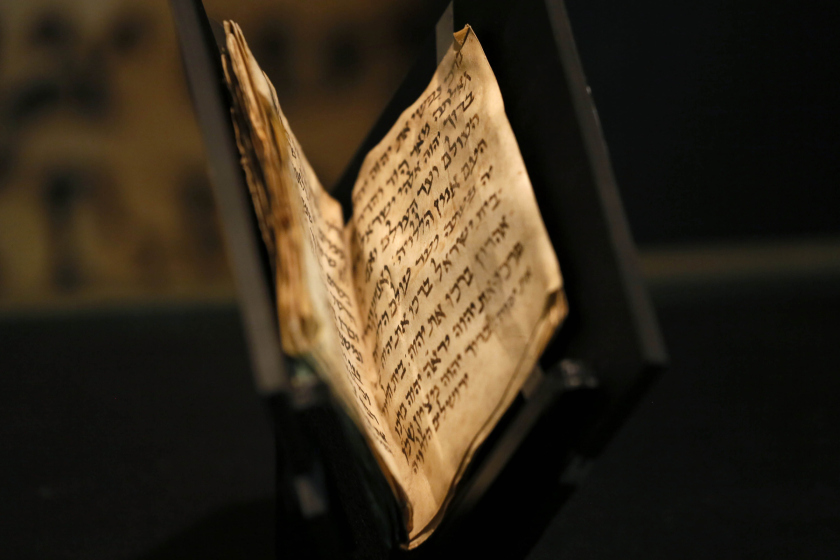 The Obuda Synagogue in Hungary was built in 1820 to replace a previous synagogue that had been destroyed. The new synagogue was designed in French Empire style by architect Andreas Landesherr. The pediment (triangular section found above the horizontal structure) and six Corinthian columns of the facade gave it the look of a classic temple. The pediment was embellished with carved ornament, and surmounted by the tablets of the Ten Commandments. On the side walls two tiers of round-arched windows alternated with classical pilasters.
The Obuda Synagogue in Hungary was built in 1820 to replace a previous synagogue that had been destroyed. The new synagogue was designed in French Empire style by architect Andreas Landesherr. The pediment (triangular section found above the horizontal structure) and six Corinthian columns of the facade gave it the look of a classic temple. The pediment was embellished with carved ornament, and surmounted by the tablets of the Ten Commandments. On the side walls two tiers of round-arched windows alternated with classical pilasters.
Inside, the bimah boasted four impressive corner columns. It once held 28 Torah scrolls belonging to the wealthy congregation. The women’s gallery ran along the northern and western walls. Fourteen chandeliers hung from the ceiling, causing some congregants to complain about the extravagance.
At its height in 1940, Hungary’s Jewish community consisted of about 800,000 Jews.
During WWII, Hungary was occupied by Germany and most of its Jews were deported to concentration camps where they were killed. About 200,000 survived.
After the war, Hungary became a communist state, and in 1960, the Obuda Synagogue was appropriated by the government and used as a studio for a state-run television network.
The synagogue, the oldest in Budapest, reopened in September 2010, just in time for Rosh Hashanah.
1,500 people participated in the rededication ceremony, among them Hungary’s Deputy Prime Minister Zsolt Semjn and Israel’s Chief Rabbi Yona Metzger.
During his speech at the ceremony, Deputy Prime Minister Semjn said that the event was significant not only to the Jewish people but also to the Hungarian government. “Even though communism formally ended in Hungary 20 years ago, the reopening of the Obuda Synagogue is a symbol of the real end of communism,” he said.
“Every house of prayer, regardless of religion, represents the human being’s connection with G-d. Everyone has a need to have a connection with his Creator, so taking away a synagogue takes away the individual’s freedom to have this bond,” he concluded.
“Because of the Holocaust, a lot of people didn’t come back to their places in this synagogue,” said Chief Rabbi Metzger at the synagogue’s re-opening. “And after some years, the communists took it and changed it into a textile museum and then into a studio for television. So to come here after 50 years shows us that the Jewish renaissance in Hungary is real.”
Israeli Prime Minister Benjamin Netanyahu and President Shimon Peres also took part in the celebration, through letters they sent to the community’s members. Netanyahu described the re-opened synagogue as “the symbol of a Jewish renaissance” and Peres wished for the synagogue to “be a house of prayer for everyone.”
The renewed Obuda Synagogue is led by Rabbi Shlomo Koves, who has said that he is concerned about re-emerging extremism in Hungary, as the far right Movement for a Better Hungary became the third largest party in recent elections. However, he said that he believes that the ongoing renovation of the Obuda Synagogue is the best way to fight extremism.
“The community, on its own, renovated this synagogue, and uses it for prayers. And that is the answer to all those voices that are here representing the strengthening anti-Semitism and the strengthening racism. The best answer is to build and to get the community together and show that we are still living and give the people the chance to go back to their own identity,” he said shortly after the rededication.
Hungary today is home to one of Central and Eastern Europe’s largest Jewish communities, with approximately 100,000 Jews currently living in the country. It is hoped that the re-opening of the Obuda Synagogue will encourage other old synagogues throughout Europe to reopen.



